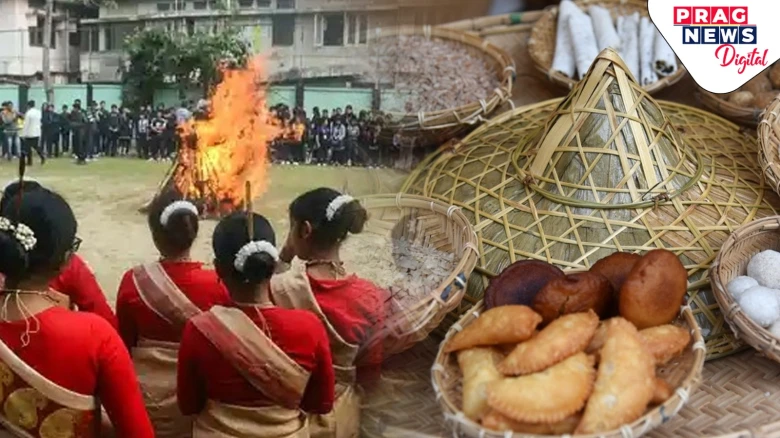Evidence of the festival's existence dates back to the time of the Ahom kings...
Digital Desk: Magh Bihu, a traditional harvest festival celebrated in Assam, holds deep cultural significance as it marks the conclusion of the harvesting season. Occurring on the first day of the Magh month, according to the Bengali Panjika, this festival is a week-long celebration dedicated to Agni, the Lord of Fire.
The roots of Magh Bihu can be traced back to the Dimasa Kacharis, an agrarian tribe in the northeastern region thousands of years ago. Evidence of the festival's existence dates back to the time of the Ahom kings, who ruled the region and recognized agriculture as a crucial aspect of the state's economy.
According to Hindu scriptures, Magh Bihu's origins extend to 3500 BC, and scholars speculate that the tradition of Bihu dates back even further, to ancient times when people performed fire sacrifices for better harvests.
The festival's customs and rituals are deeply intertwined with the indigenous communities of Assam. Lighting a bonfire on Uruka and burning Meji can be traced back to the fire worship tradition of the agrarian society. Expressing gratitude towards deities for a bountiful harvest and seeking blessings for the upcoming agricultural cycle are central themes during Magh Bihu.
Magh Bihu 2024: Seven days of harvest bliss, customs
In 2024, Magh Bihu commences on January 14, with Jorhat, the cultural capital of Assam, hosting Bihu competitions and community feasts. This seven-day festival embodies a holistic blend of religious, social, and cultural elements, fostering unity and gratitude among the people of Assam.
The seven days of Magh Bihu are filled with diverse activities:
Bhogali Uruka: Families come together to feast and build Meji structures.
Magh Bihu (Central day): People light the Meji, a makeshift structure made of bamboo, thatch, and local raw materials, symbolizing the renewal of the agricultural cycle.
Goru Bihu: Dedicated to honoring cattle, essential in farming.
Manuh Bihu: Emphasizing social bonds and mutual greetings.
Kutum Bihu: Involves seeking blessings from elders.
Mela Bihu: Engages in cultural events and fairs.
Chera Bihu: Marks the end of the celebration, with the Meji dismantled, and its ashes scattered as fertilizer in the fields.
Magh Bihu: Nurturing Gratitude, Unity, and Assamese Culture in Harvest Celebrations
Magh Bihu serves as a poignant reminder of our dependence on nature's bounty and the hard work of farmers who bring food to our tables. The festival brings people together, fostering a sense of unity and belonging within the community.
Beyond the agricultural significance, Magh Bihu is a vibrant display of Assamese traditions, including music, dance, and cuisine. This cultural expression ensures the preservation of Assamese heritage for future generations.
The festival represents the conclusion of one agricultural cycle and the commencement of the Assamese New Year, instilling in the community a spirit of freshness and hope.

Leave A Comment